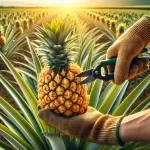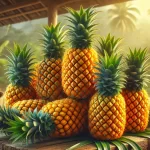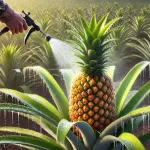Pineapple cultivation (Ananas comosus) faces various challenges in terms of pests and diseases that can affect the yield and quality of the fruit. Proper management of these problems requires an integrated approach that combines monitoring, cultural practices, biological control, and, when necessary, the use of chemical control. Below are the main pests and diseases affecting pineapple cultivation and the most effective strategies for their management.
Main Pests in Pineapple Cultivation
1. Pink Pineapple Mealybug (Dysmicoccus brevipes)
Description
The pink pineapple mealybug is a sucking pest that feeds on the sap of pineapple plants, weakening them. It is also known for transmitting the red wilt virus.

Symptoms
- Appearance of white cottony masses at the base of the leaves.
- Yellowing and weakening of leaves.
- Wilting and reduction in fruit size.
Control Strategies
- Monitoring: Conduct regular inspections to detect early infestations.
- Biological Control: Use of natural enemies such as parasitoid wasps (Anagyrus spp.) and ladybugs.
- Chemical Control: Application of systemic insecticides such as imidacloprid in cases of severe infestations.
2. White Pineapple Mite (Steneotarsonemus ananas)
Description
The white pineapple mite is a pest that feeds on the tissues of young pineapple leaves, causing deformations and reducing growth.

Symptoms
- Deformed and wrinkled young leaves.
- Yellowish color on new leaves.
- Reduced growth and vigor of the plants.
Control Strategies
- Monitoring: Inspect young leaves for the presence of mites.
- Biological Control: Introduction of predatory mites such as Amblyseius spp..
- Chemical Control: Use specific acaricides like abamectin, applied in a targeted manner to minimize environmental impact.
3. Cutworm (Agrotis spp.)
Description
The cutworm is a larva that feeds on the bases of pineapple plants, cutting young stems and weakening the plants.
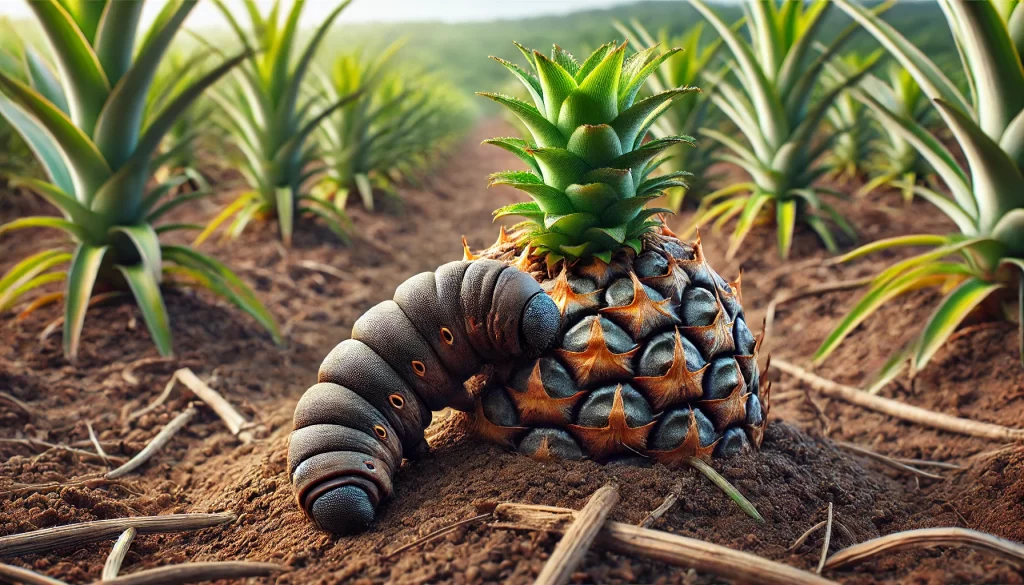
Symptoms
- Seedlings cut or bent near the base.
- Visible damage to the stem, especially in early growth stages.
Control Strategies
- Monitoring: Check young plants for damage and larvae.
- Cultural Control: Keep the field clean of weeds and residues that may serve as shelters for larvae.
- Biological Control: Use entomopathogenic nematodes or the bacterium Bacillus thuringiensis.
Main Diseases in Pineapple Cultivation
1. Heart Rot (Phytophthora spp.)
Description
Heart rot is a disease caused by fungi of the genus Phytophthora, affecting the base of the leaves and stems of pineapple plants, especially in conditions of high humidity.

Symptoms
- Wilted and discolored central leaves.
- Necrosis at the base of the leaves and stems.
- Foul odor coming from the rotting stem.
Control Strategies
- Irrigation Management: Avoid waterlogging and ensure good soil drainage.
- Chemical Control: Application of systemic fungicides like metalaxyl and fosetyl-Al.
- Cultural Control: Removal of affected plants to reduce the source of inoculum.
2. Anthracnose (Colletotrichum gloeosporioides)
Description
Anthracnose is a fungal disease that affects the leaves, flowers, and fruits of pineapple, causing black spots and rot.
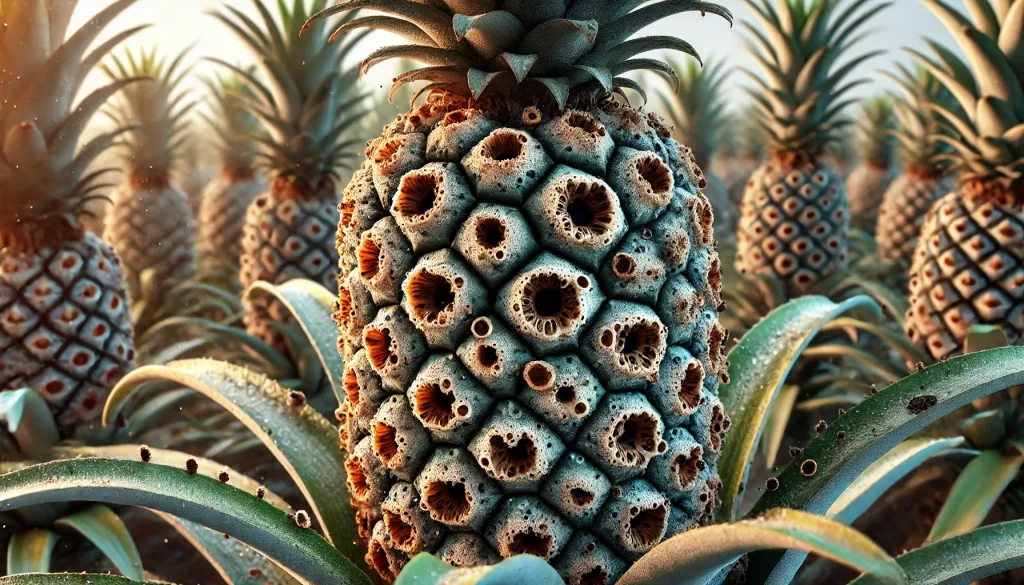
Symptoms
- Black and round spots on leaves, flowers, and fruits.
- Soft rot on the fruits.
- Premature flower drop.
Control Strategies
- Cultural Management: Avoid mechanical damage to plants that could facilitate the entry of the fungus.
- Chemical Control: Application of preventive fungicides such as azoxystrobin and mancozeb.
- Biological Control: Use of biofungicides based on Trichoderma spp. to inhibit fungal growth.
3. Red Wilt
Description
Red wilt is a viral disease mainly transmitted by the pink pineapple mealybug. It affects plant vigor and can significantly reduce yield.
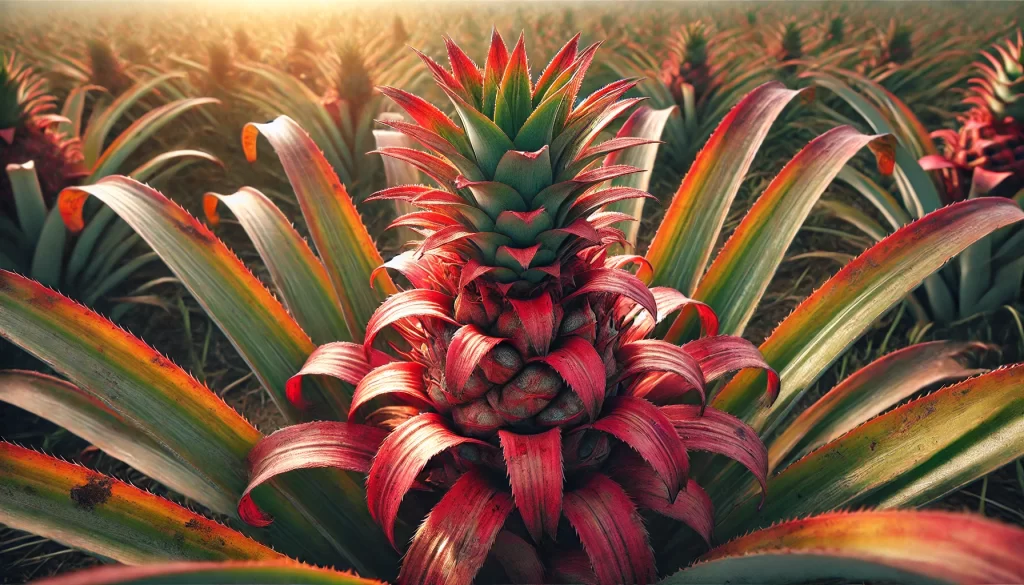
Symptoms
- Leaves with reddish or purple streaks.
- Loss of vigor and slow growth.
- Reduction in fruit size and quality.
Control Strategies
- Integrated Pest Management (IPM): Control the population of mealybugs through biological and chemical methods.
- Cultural Control: Removal of affected plants to prevent virus spread.
- Chemical Control: Use systemic insecticides to control vector mealybugs.
Integrated Management Strategies
Monitoring and Early Detection
Regular crop monitoring is essential for early detection of pests and diseases. Frequent inspection allows for rapid intervention before infestations or infections become uncontrollable.
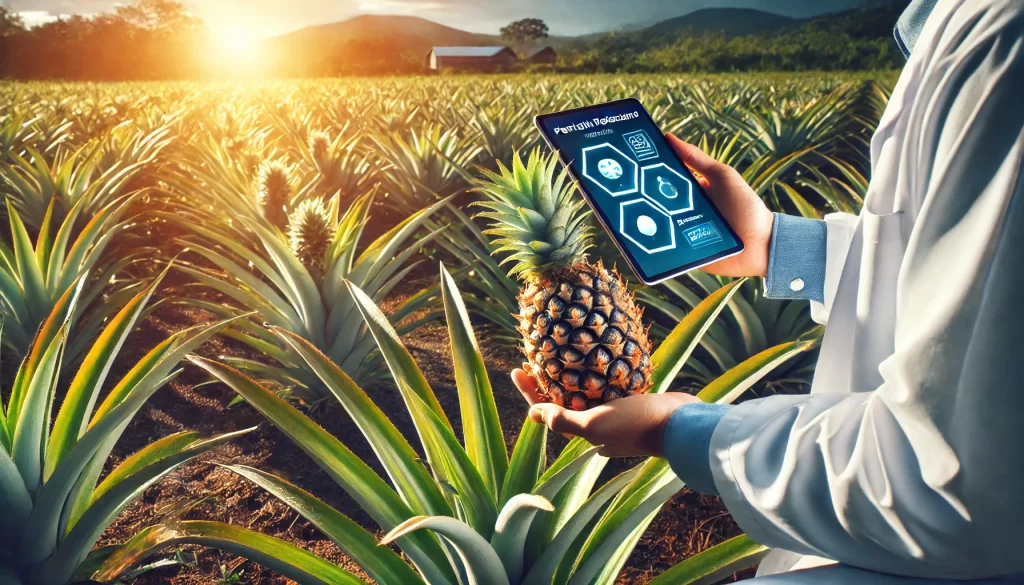
Cultural Practices
Implementing proper cultural practices, such as crop rotation, using cover crops, and removing affected crop residues, can significantly reduce the incidence of pests and diseases.
Biological Control
The use of natural enemies and biological control agents, such as parasitoids, predators, and antagonistic fungi, is an effective and sustainable strategy for managing pests and diseases in pineapple cultivation.
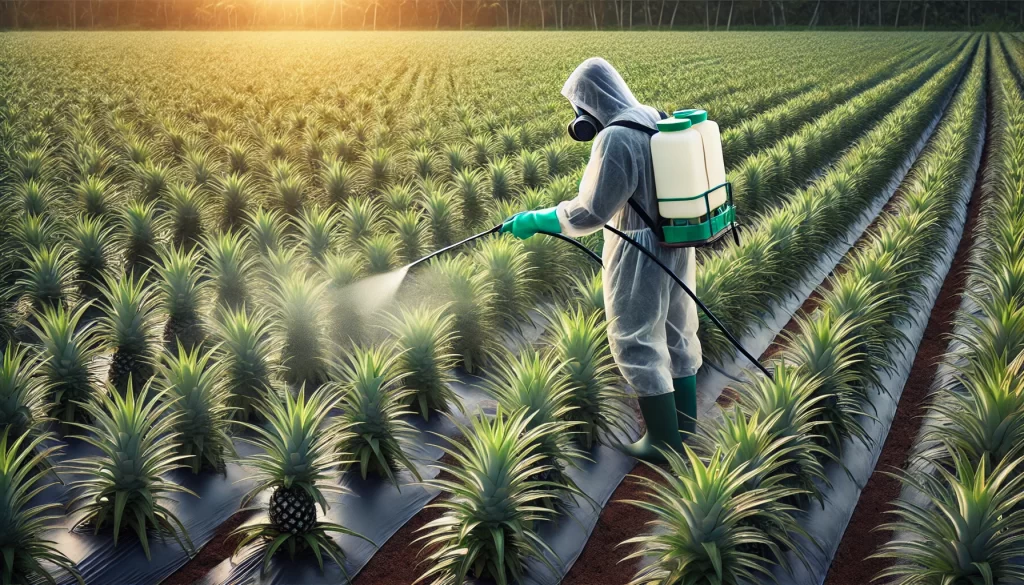
Chemical Control
The use of pesticides and fungicides should be considered as a last line of defense and always within the context of an integrated pest management (IPM) program. It is essential to rotate chemical products used to avoid resistance development.
 AgronoBlog – Agriculture Blog
AgronoBlog – Agriculture Blog 
